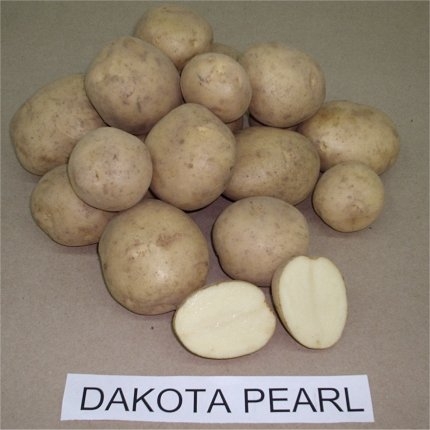
Features
Chemicals
Insects
Sprouting tech can help expand potato markets
September 25, 2012 By Ontario Potato Board
 Dakota Pearl potato variety
Dakota Pearl potato variety September 25, 2012 – A new green sprouting technology being trialed in Ontario has been shown to accelerate potato growth by at least 12 days. Earlier harvest of processing potatoes will help Ontario farmers expand their domestic potato markets.
“Chip manufacturers would prefer a 100 per cent domestic potato supply to support their sustainability initiatives and locally grown marketing campaigns,” says potato specialist Eugenia Banks of the Ontario Ministry of Agriculture, Food and Rural Affairs. “These have been rolled out over the last two years and the Ontario potato industry needs to catch-up to these programs as soon as possible in order to be part of them.”
A FIP grant helped the Ontario Potato Board launch a project to investigate new production technologies, including green sprouting, which involves keeping seed tubers in plastic trays under indirect light at 16C for about three weeks prior to planting. This stimulates the growth of short, thick sprouts that result in a potato crop emerging from the soil in eight or nine days after planting. Seeds planted without sprouts take approximately 21 days to emerge.
Field trials conducted in 2010 and 2011 in partnership with several potato growers showed Dakota Pearl processing potatoes planted using green sprouting ready for harvest 12 days ahead of the conventionally planted crop. Similar results were obtained with Superior and Yukon Gold potatoes, both fresh market varieties.
“Harvesting potatoes 12 days earlier should result in a price increase of about 15 per cent for farmers and, as a consequence, increase the competitiveness of both processing and fresh market growers,” estimates Banks.
Information from the trials has been shared at annual meetings of the Ontario Potato Board and Potato Field Day in Alliston. Banks also uses farm visits across the province as opportunities to share results of her work with potato producers.
Other research from this project is still ongoing with results expected later this year. This includes environmentally friendly ways to control scab, the main potato pest, and enhancing the skin colour in red potatoes to make them more appealing to buyers and consumers.
“For potato growers, this kind of research is invaluable because it addresses their production problems and the work is conducted on their farms. This gives them the opportunity to see the results for themselves and allows for early adoption of new technologies,” says Banks. “Farm-based projects also help us detect potential problems related to factors like weather and provide solutions with grower input.”
Print this page